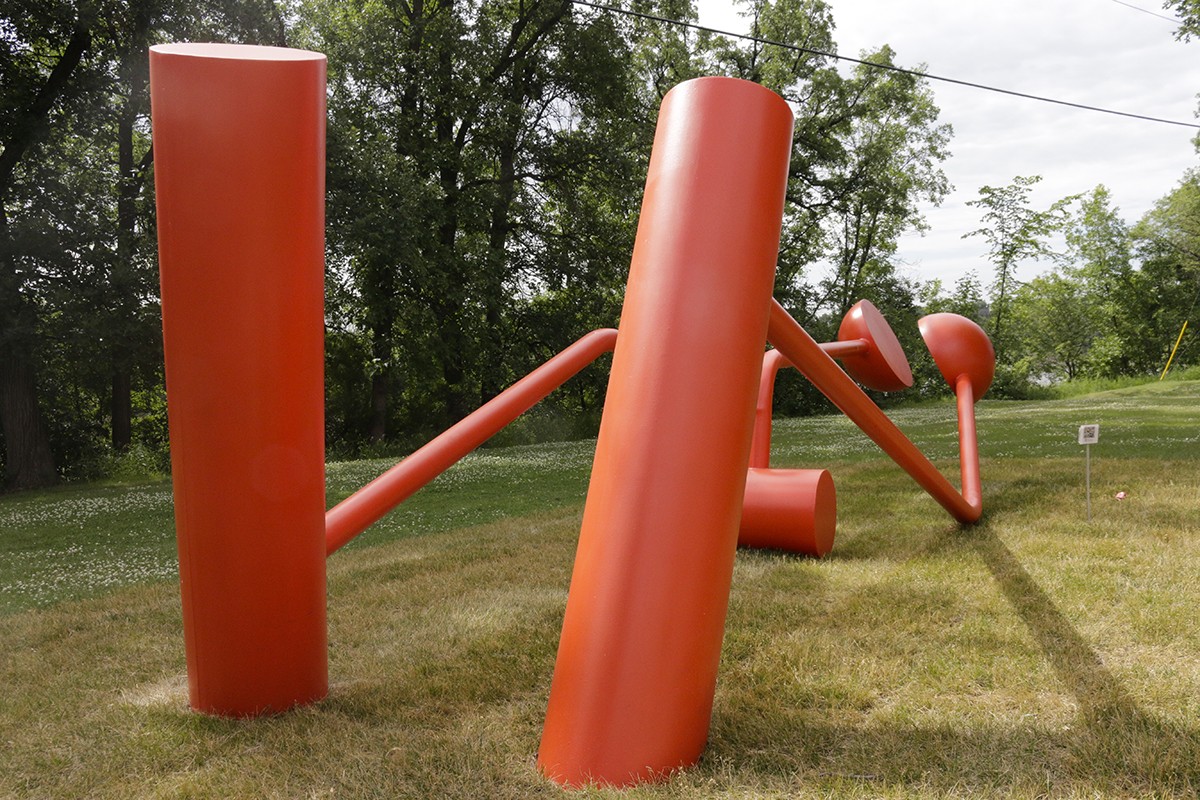
Climax by Royden Josephson // Photo by Jack Rach
Restoring Climax
Prolific, 45-year-old sculpture refurbished
You’ve probably seen it. To the south of the Asper School of Business, there’s this strange piece of public art resting on green space overlooking the Red River. The sculpture has been there for 45 years.
Work on the piece started in 1969 and finished in August of 1970. Royden Josephson was commissioned by the campus planning department as part of his Bachelor of Fine Arts thesis.
“The idea for Climax came partly from the materials available – the two hemispheres had been collected by professor Tom Henderson and had been lying around the studio for a while. They became the essential elements and starting point for the sculpture,” says Josephson.
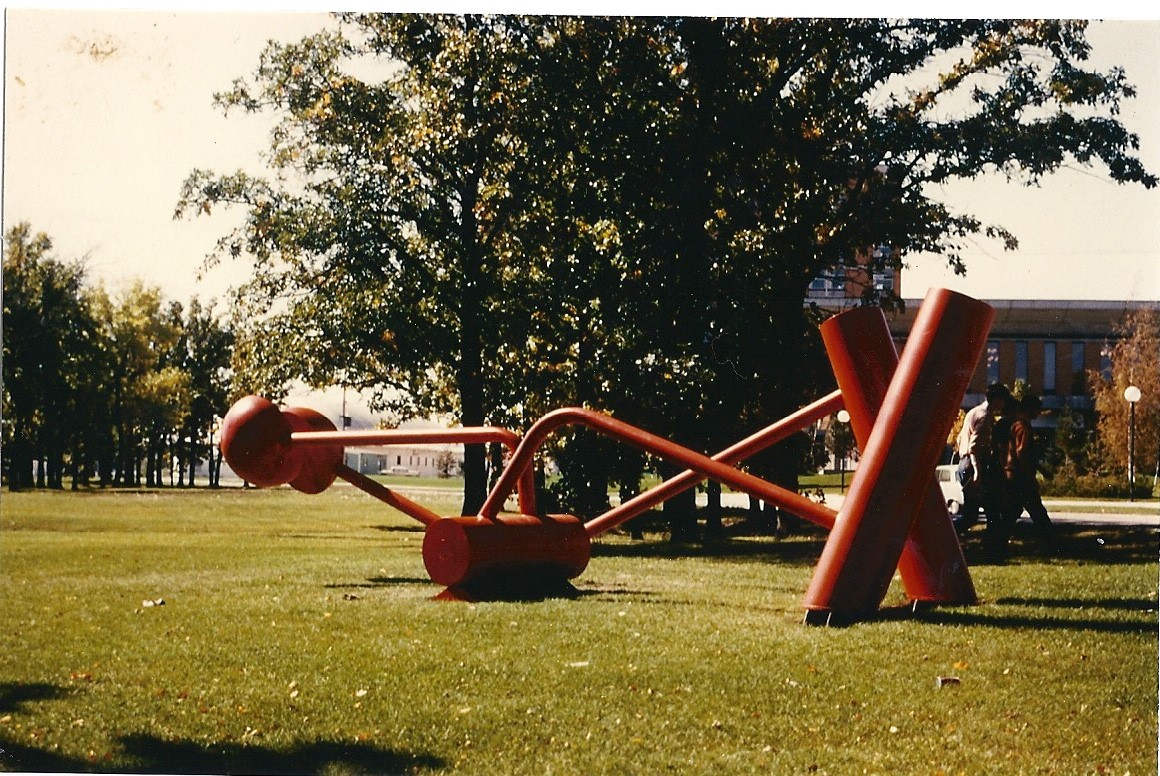
A photo of 'Climax' by Royden Josephson taken sometime after it's installation
Influenced by his upbringing on a farm in rural Manitoba, Josephson was experimenting with the ideas of prairie tools using steel as a medium for his art. The sculptures he made did not represent any real farm implement but were thematically related.
Josephson wasn’t paid for his graduation project but was given a budget for material. “It seems incredible that all this material has available for a budget of $1,000.”
The project was also made possible with the assistance of the university’s maintenance department who helped with the sculpture’s installation. They provided the tools, equipment, and personnel, specifically for some of the welding and painting.
Josephson and the maintenance department worked together to pick the colour of the paint initially used as well. This is how the sculpture was named: the paint colour was called ‘climax.’
Andrew Lovatt is a designer in physical plant who graduated from the U of M’s Faculty of Architecture. As a student he was assigned to do drawings of the sculpture and now as an employee, he coordinated the physical restoration of it.
“One of the things I loved is when we picked the replacement paint colour that we thought might be appropriate. Royden went to a paint shop, he lives in British Columbia, and picked a swatch. It turns out, he chose the exact same colour as the one we had chosen in Winnipeg without talking to each other,” says Lovatt.
Over the years the sculpture slowly deteriorated. Welds began to break and the overall integrity of the structure started to fail. It was clear the sculpture needed significant restoration and conversations on doing so started in 2010. However, it wasn’t until 2014 when these conversations began to take shape in a truly collaborative way – just like the project began – between physical plant and people in campus art collections unit.
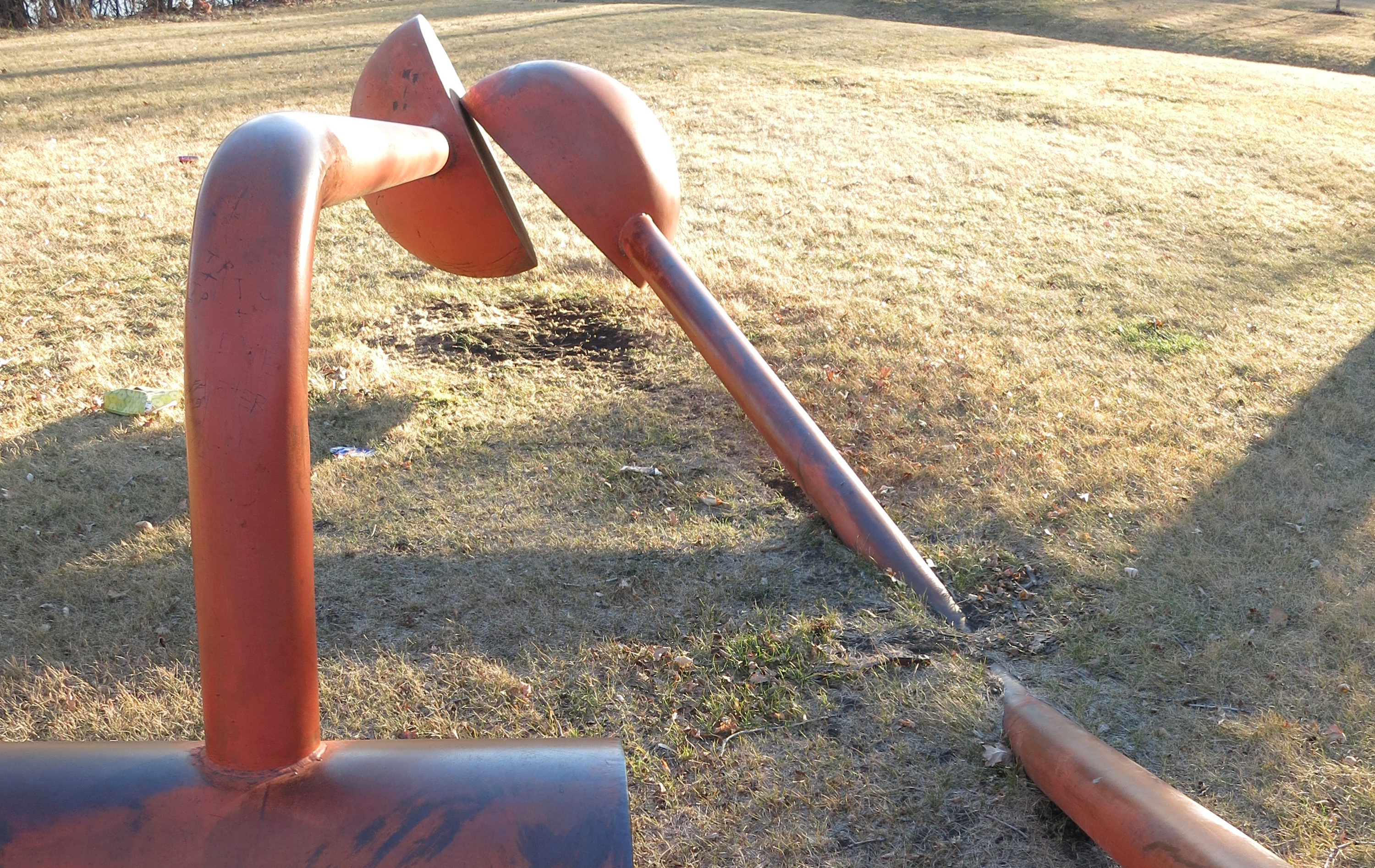
The sculpture's integrity deteriorated after 45 years and was in need of repair // Photo by Andrew Lovatt
“My predecessor, Jenny Western has been a big force in moving this ahead,” says Sigrid Dahle, the U of M’s art collections coordinator. “What’s been really exciting is the fact that at the U of M there’s so many amazing resources and skills that when you’re working on a project like this you can get so much of the work, in this case all of the work done in-house.”
Dahle says the collaboration made the restoration project for Climax feasible, saving the U of M tens of thousands of dollars.
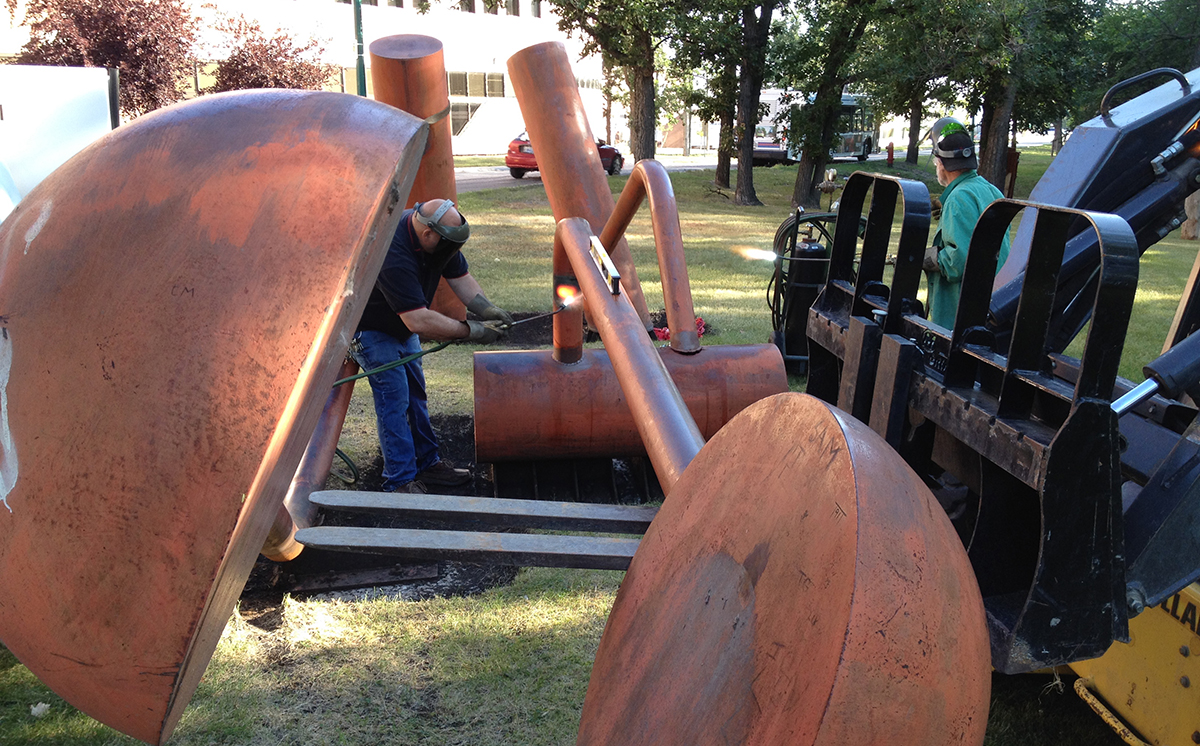
The restoration of Royden Josephson's 'Climax' was a collaborative effort by physical plant and the art collections department // Photo by Andrew Lovatt
“People are pooling their resources at the university and that’s really exciting to see because that’s how stuff actually gets done. It’s an example of how under fiscal restraint really amazing things can happen,” says Dahle.
The restoration was completed in a two-phase approach. Repairs to the physical structure itself were completed as part of phase using a skid steer and a front end loader to get the sculpture back into place. With the heavy equipment doing the lifting, the pieces of the sculpture were re-fitted and welded back into place by physical plant in August 2014.
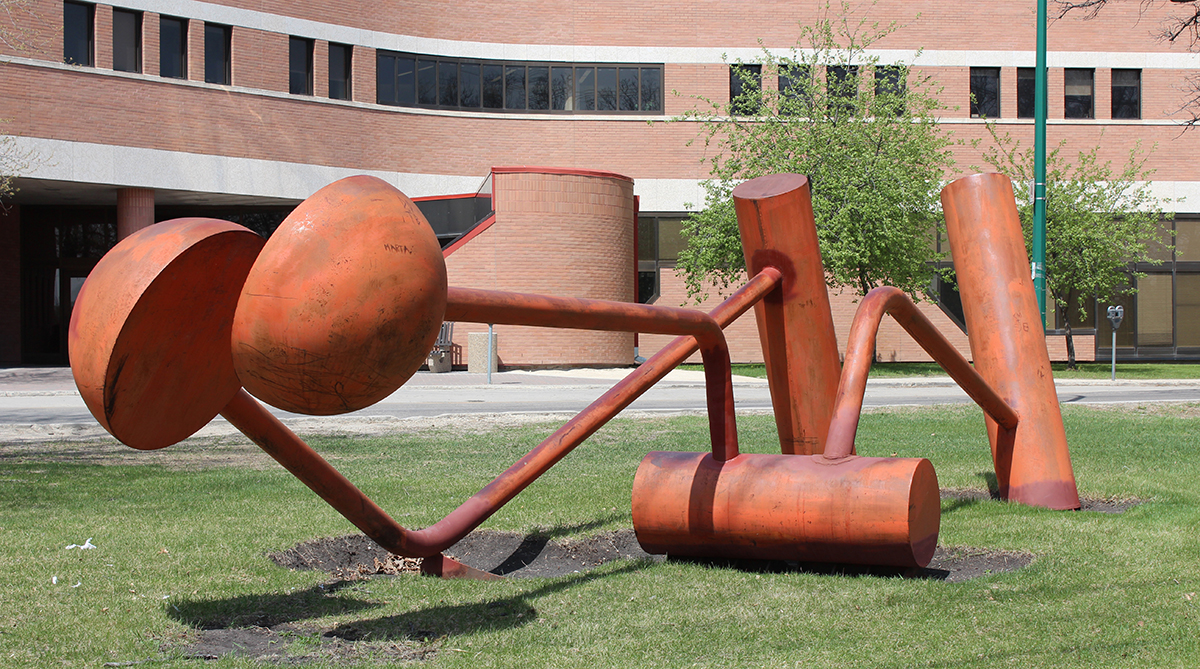
Restoration of the sculpture is nearly complete // Photo by Jack Rach
For phase two, Josephson’s sculpture was then painted and the area around it was landscaped in spring of 2015.
The U of M community never stopped paying attention to Josephson’s sculpture but now that’s it’s been restored there is a renewed excitement for the piece of public art that’s been on campus for over four decades.
“It is gratifying to know that these people were determined and resourceful enough to get the job done. I am very happy,” says Josephson.
The artist will be on campus for the sculpture’s official re-opening on Wednesday, August 5 at 10:00 a.m. For full details, check the event listing.







I am so glad this piece has been restored so nicely.
Thanks!
The restoration and relandscaping of “Climax”
has contributed to the upgrading of the areas
around the Drake Centre.
We are proud of this work!
This is wonderful! Congratulations to all involved.
Fantastic. As an U of M grad, I’ve always liked this piece along with many others on campus.